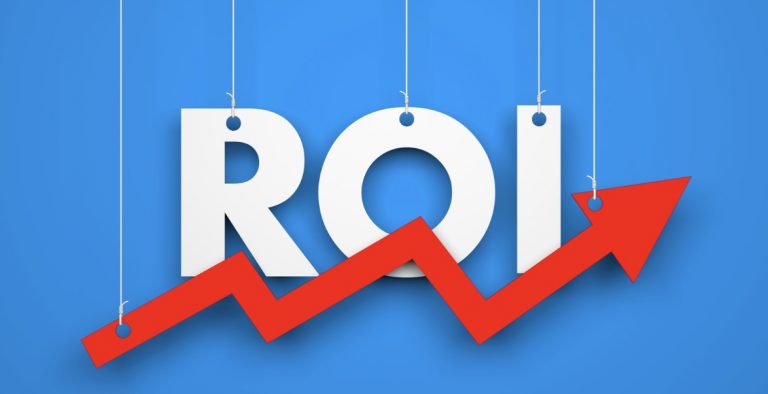Nowadays, businesses use the internet a lot for marketing. They find customers online. But it’s not enough to just be online. You need to check if your online marketing is working well. This means looking at your Return on Investment (ROI). In this article, we will talk about the important ways to measure ROI in digital marketing.
1. Understanding ROI in Digital Marketing
ROI in digital marketing measures the return on investments made in various online marketing strategies. It assesses how efficiently you use your resources, time, and money for future campaign decision-making. It’s essential because it helps you assess the effectiveness of your campaigns and allocate resources wisely.
2. The Metrics that Truly Matter
When it comes to measuring ROI in digital marketing, not all metrics are created equal. Here are the critical ones to focus on:
2.1. Conversion Rate
Conversion rate is a fundamental metric. It keeps a close eye on the percentage of website visitors who perform a specific action. This action can include making a purchase, subscribing to a newsletter, or filling out a contact form.
2.2. Customer Acquisition Cost (CAC)
To determine your Customer Acquisition Cost (CAC), follow a simple calculation. First, take the total amount of money you spent on marketing. Then, divide this by the number of new customers you gained within a specific time frame. This calculation provides a clear picture of the cost linked to acquiring each new customer. The lower your CAC, the better, as it means you’re acquiring customers efficiently.
2.3. Click-Through Rate (CTR)
The Click-Through Rate measures the effectiveness of your ad copy and call-to-action buttons. It is calculated by dividing the number of clicks on your ad by the number of times it was shown. A high CTR indicates that your digital marketing materials are resonating with your audience.
2.4. Cost Per Click (CPC)
Cost Per Click is the amount you pay each time someone clicks on your ad. Monitoring CPC is essential to ensure you’re not overspending on your digital marketing campaigns.
2.5. Customer Lifetime Value (CLTV)
Customer Lifetime Value (CLTV) predicts how much a customer is expected to spend with your business over time. It’s a valuable metric for strategic decisions. It helps you see the long-term value of your digital marketing efforts.
2.6. Return on Ad Spend (ROAS)
Return on Ad Spend (ROAS) is a crucial metric in digital marketing. It measures the revenue generated from your advertising campaigns. This measurement is compared to the amount of money you’ve spent on those campaigns. ROAS helps you determine the effectiveness and profitability of your advertising efforts. A ROAS greater than 1 means you’re earning more than you’re investing in advertising.
3. Setting Clear Goals
To effectively measure ROI, start by setting clear and specific goals for your digital marketing campaigns. Having clear goals helps you focus on the correct metrics, whether it’s for website visitors, sales, or email subscribers.
4. Tracking Tools and Analytics
For accurate ROI measurement, you require proper tools and analytics platforms. For instance, Google Analytics is a powerful tool that offers valuable insights. Google Analytics provides information on several key aspects. These include website traffic, user behavior, and conversion rates. Social media platforms also provide insights on engagement, clicks, and conversions.
5. A/B Testing and Optimization
A/B testing entails creating two versions, A and B, for a digital marketing element. This element could be anything, from an email subject line to a landing page. When you compare the performance of these two versions, you can identify which one connects better with your audience. This insight enables data-driven optimizations for your campaigns.
6. Calculating ROI
To calculate ROI, use the following formula:
ROI = (Net Profit – Marketing Costs) / Marketing Costs x 100
For example, if you invested $1,000 in a digital marketing campaign and earned $5,000 in revenue, your ROI would be:
ROI = ($5,000 – $1,000) / $1,000 x 100 = 400%
7. Monitoring and Adjusting
Digital marketing is dynamic, and what works today may not work tomorrow. Keep a close eye on your metrics and be prepared to adjust your strategies based on the insights you gather. This flexibility is key to improving your ROI over time.
Conclusion. Unlocking the Full Potential of Digital Marketing ROI
In conclusion, measuring ROI in digital marketing is both vital and continuous. To achieve the best results, it’s important to concentrate on the right metrics. Define clear goals that align with your business objectives. Use effective tools like analytics platforms and tracking software. Additionally, keep refining your campaigns. This ongoing process aims to make them perform better and get the most out of your investments. Remember, ROI analysis is not a one-time task but an ongoing process.



0 Comments